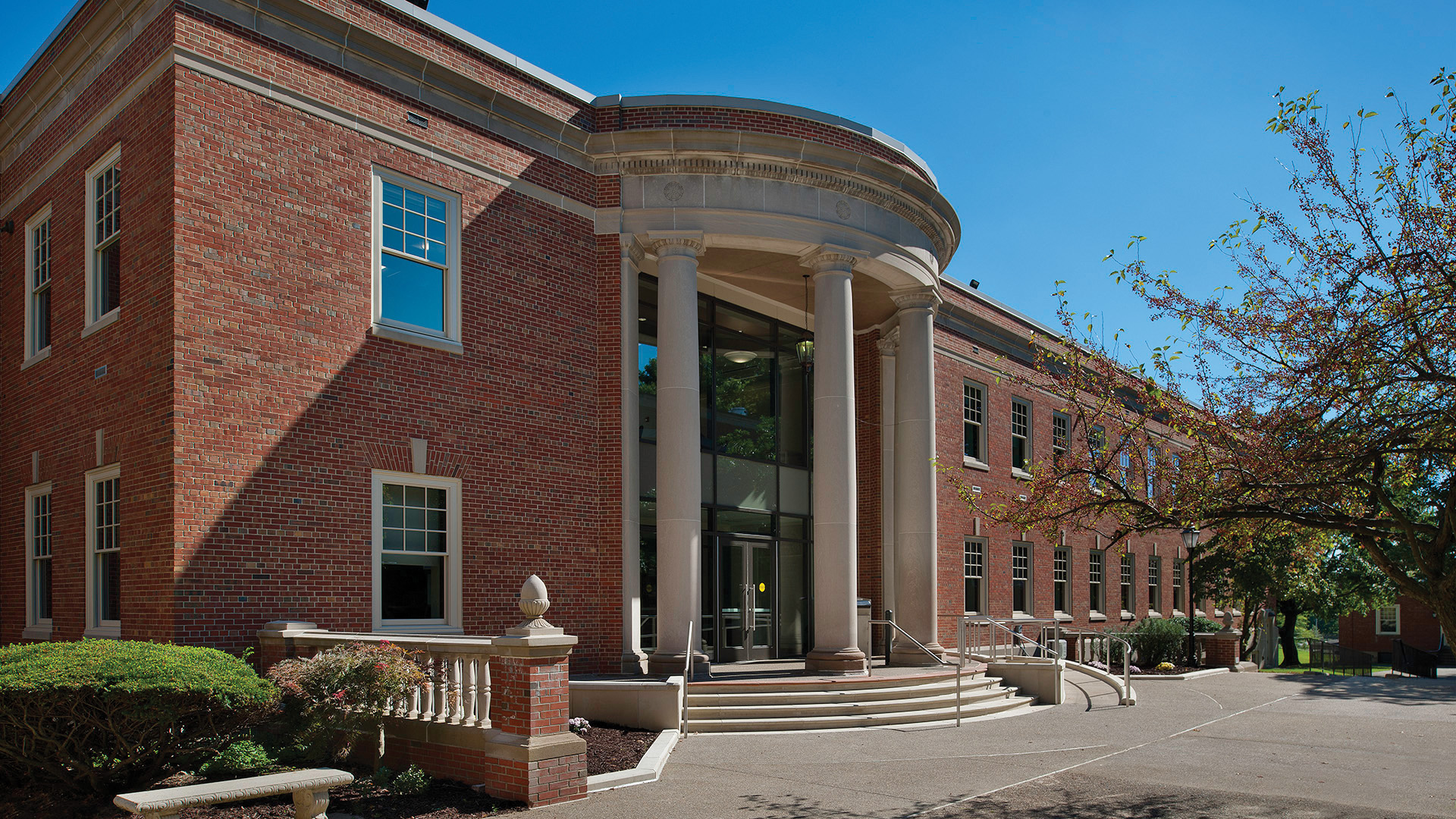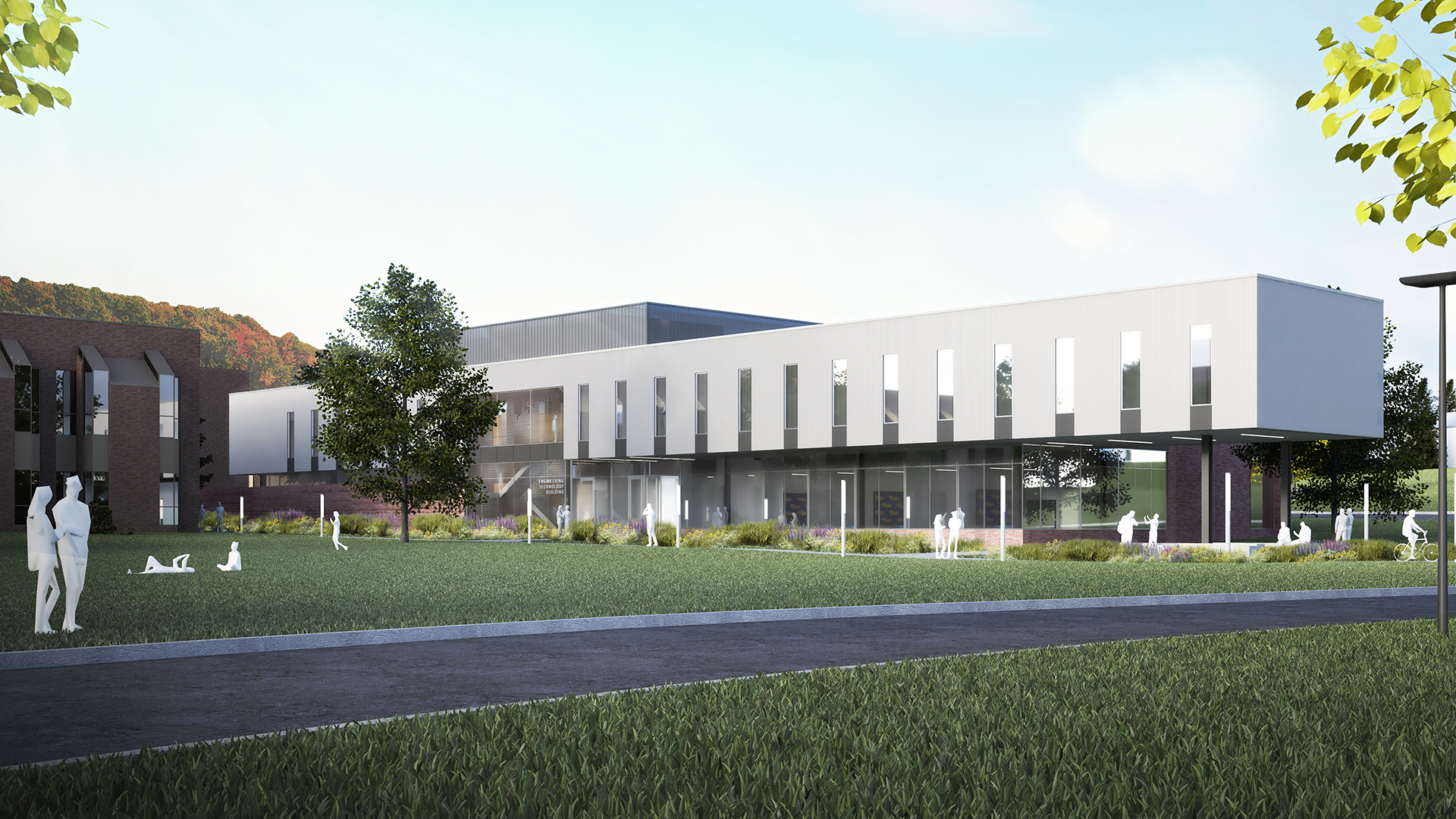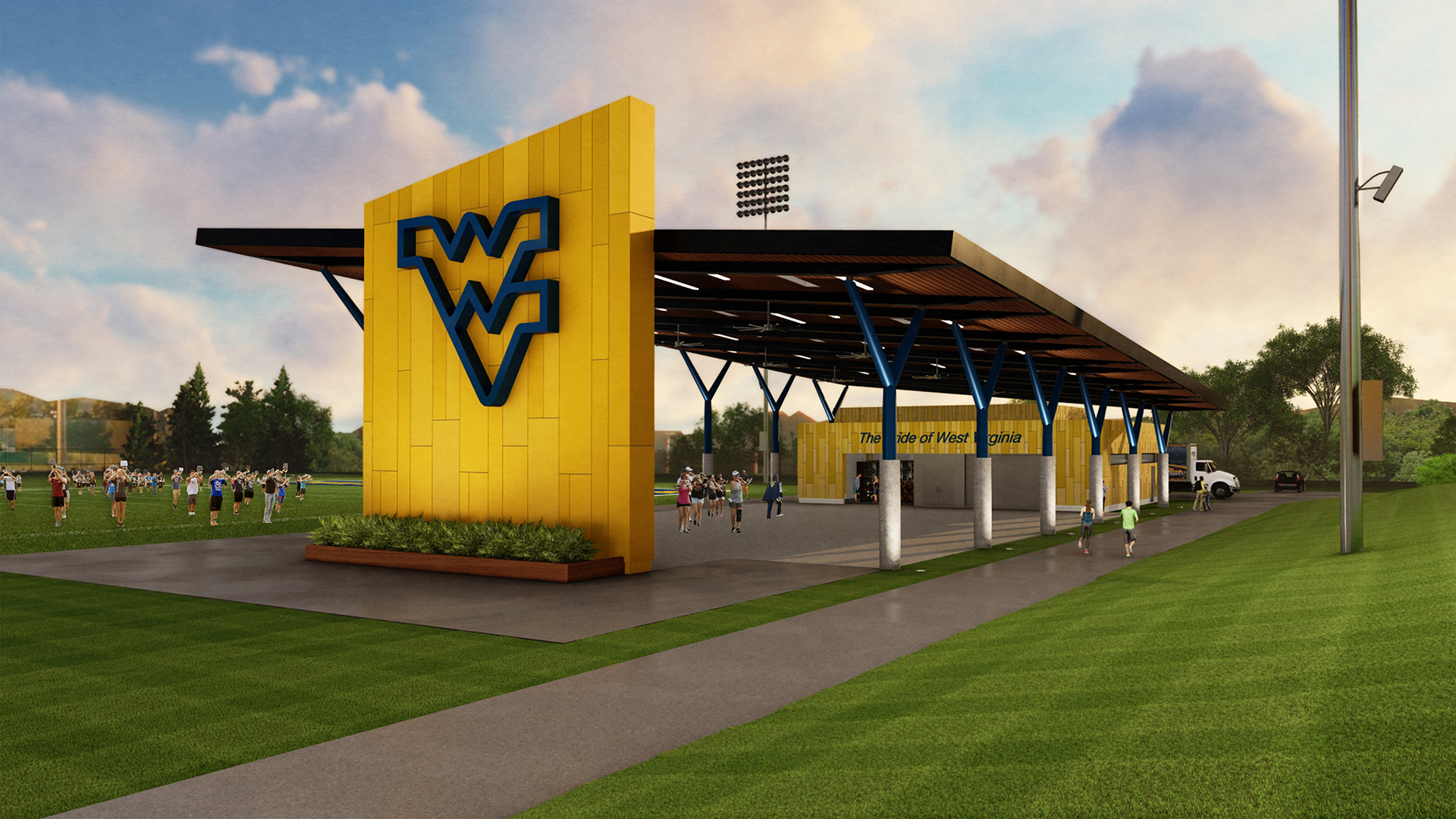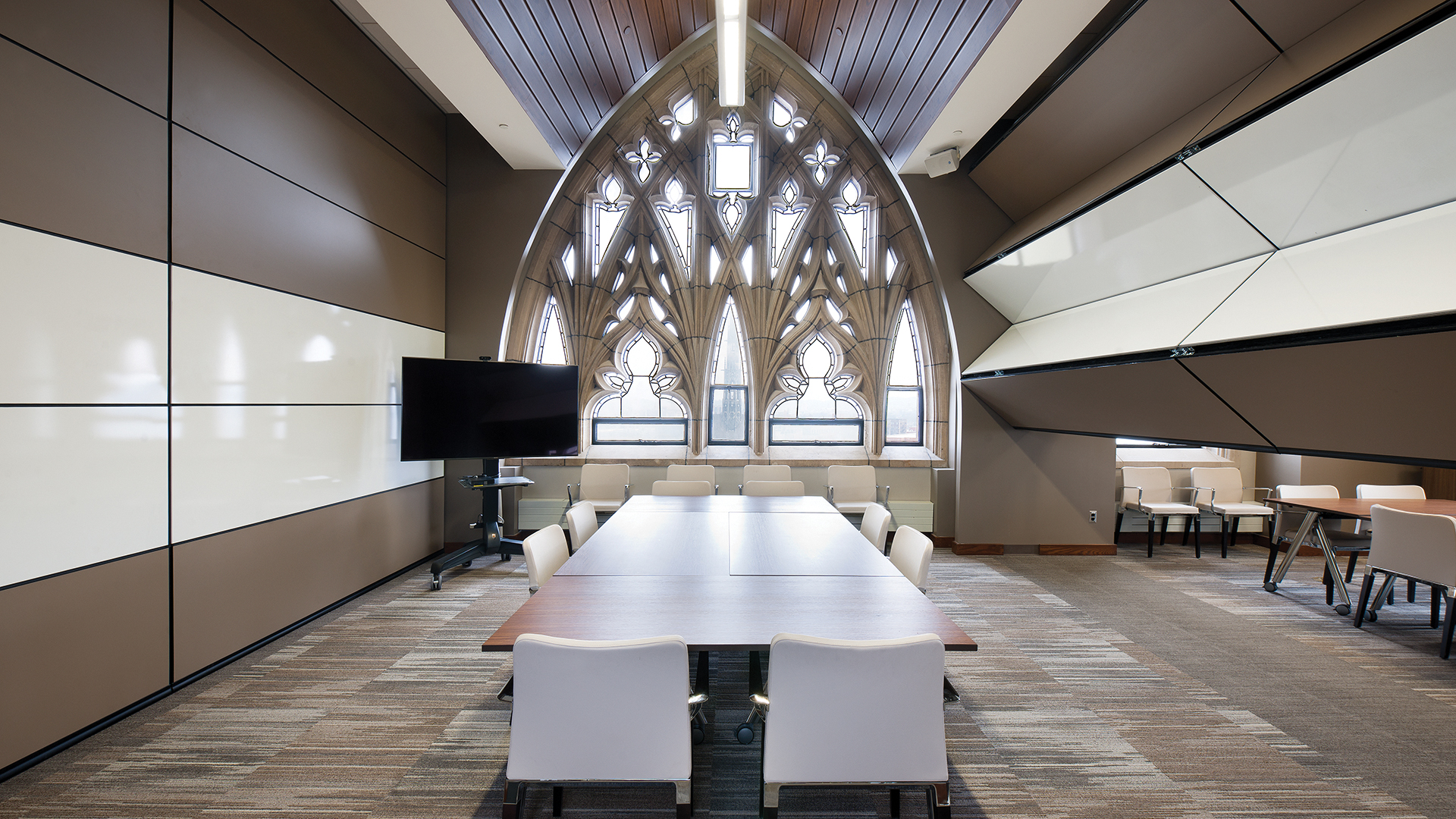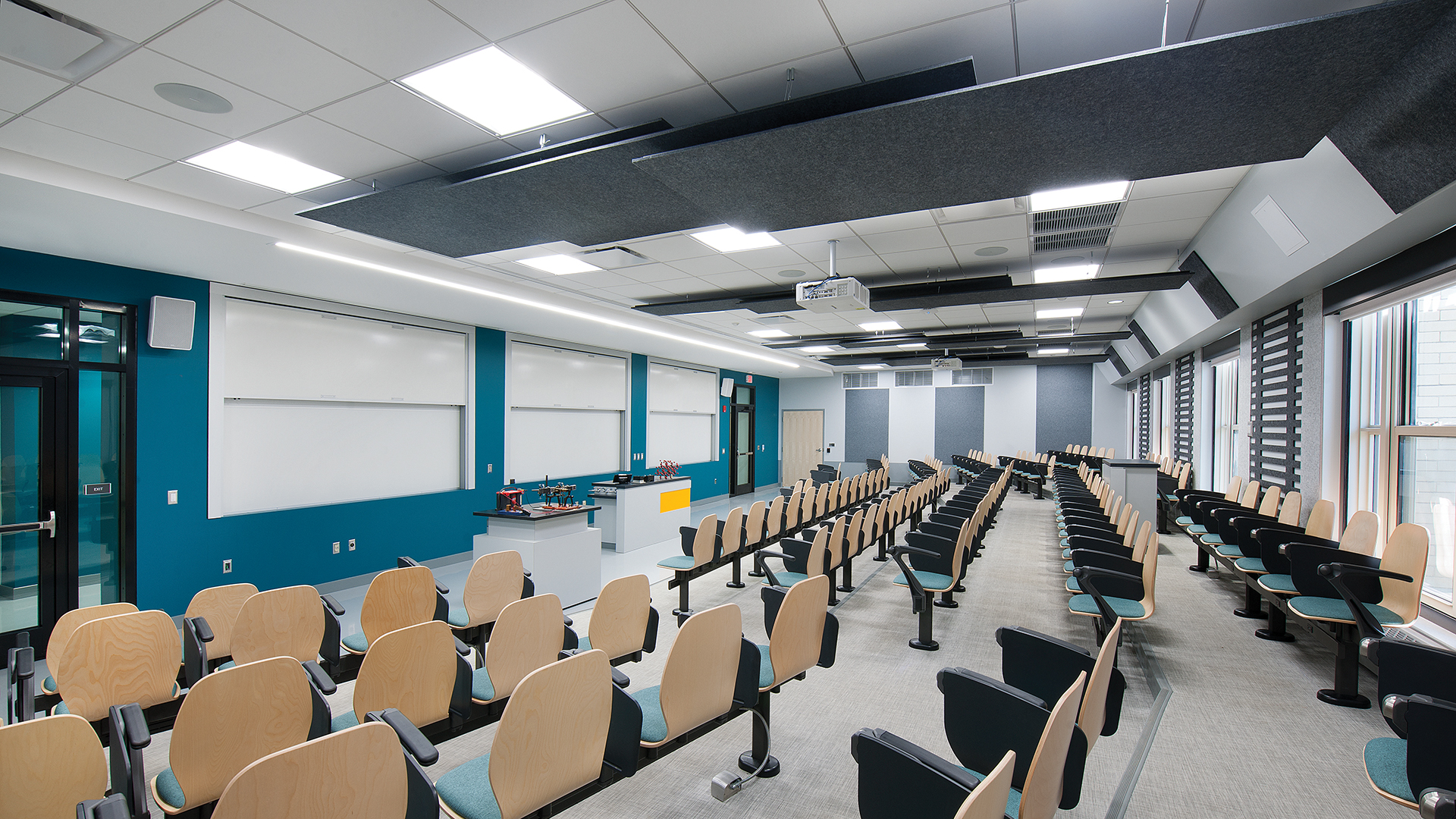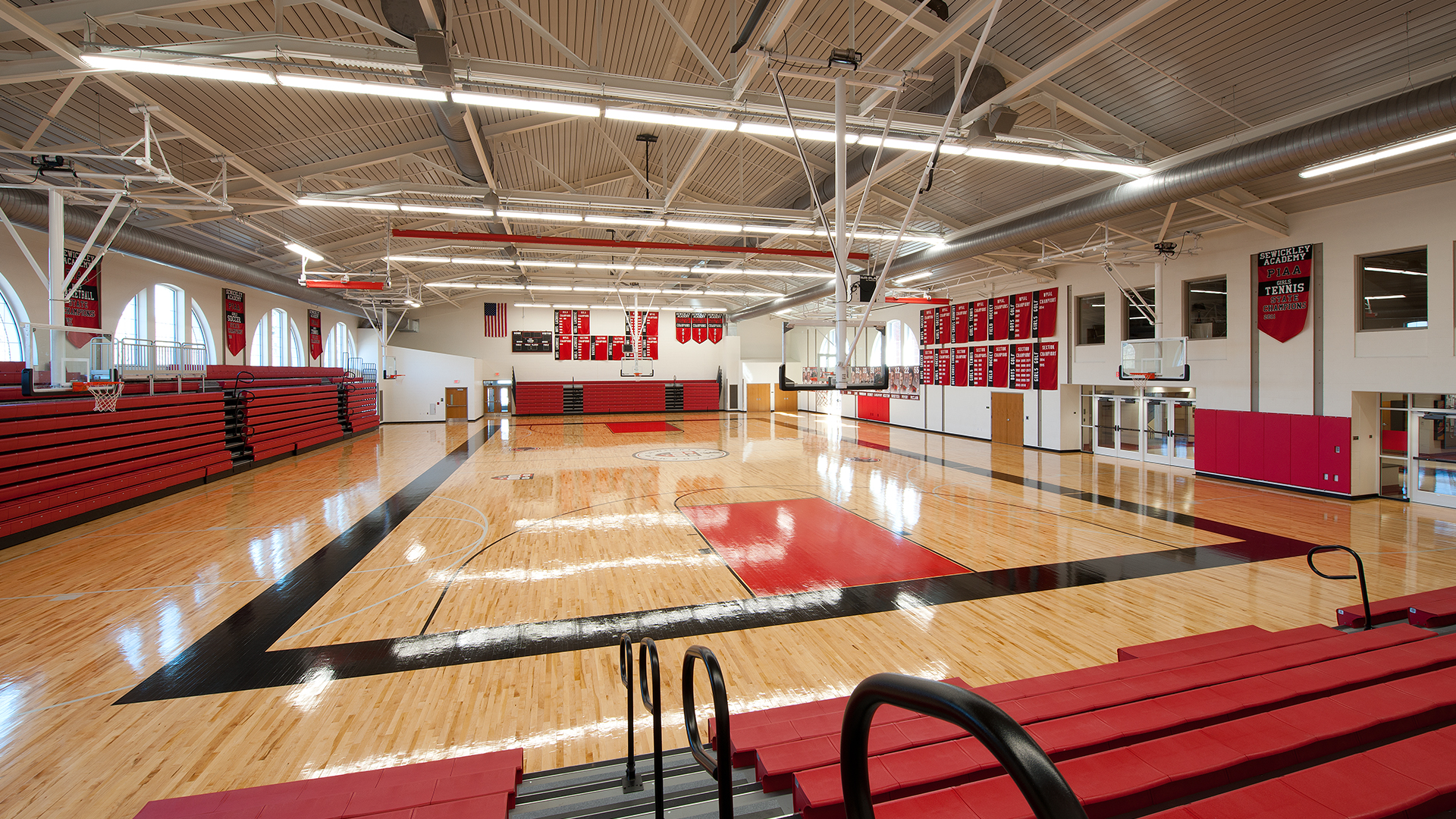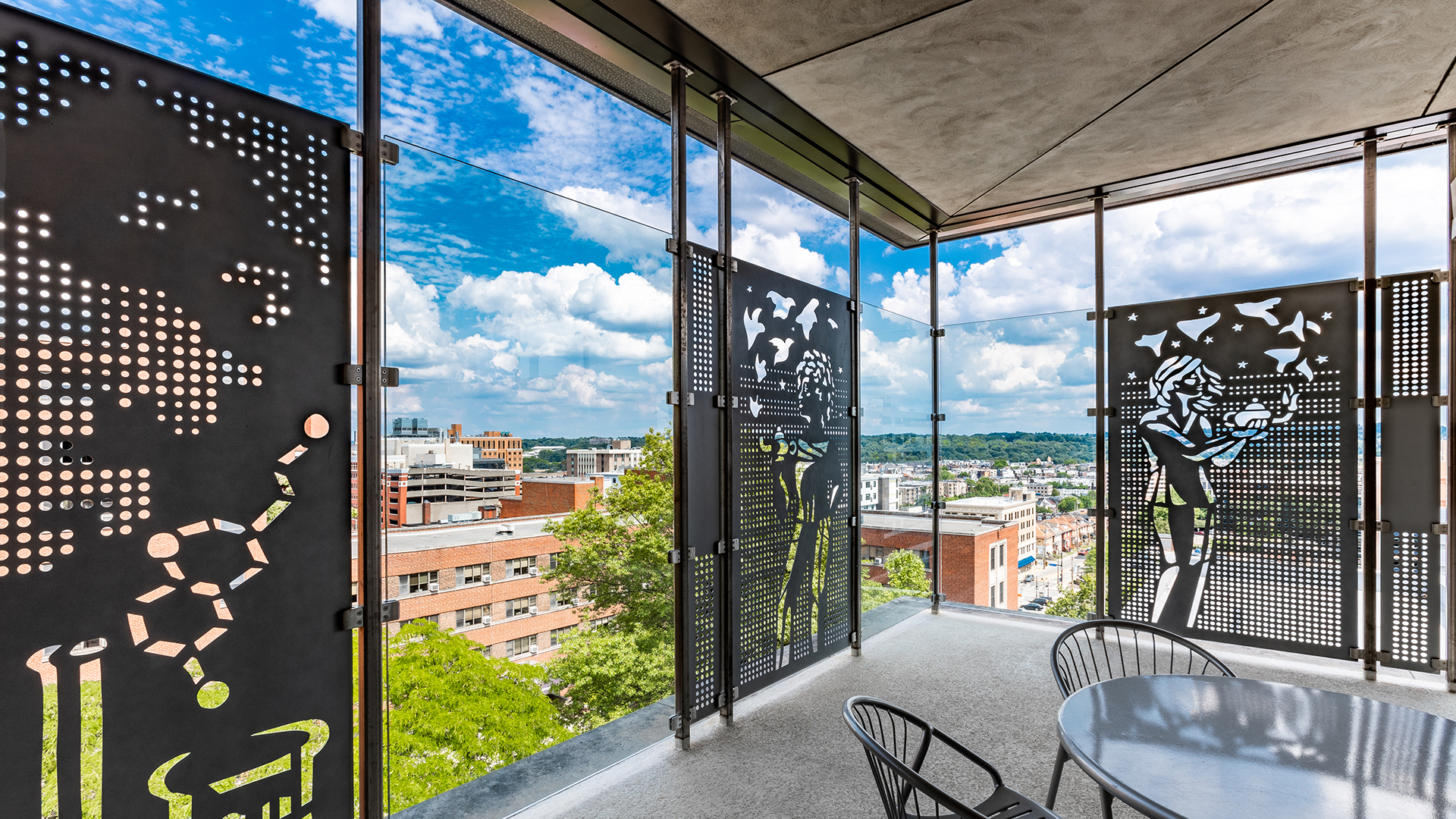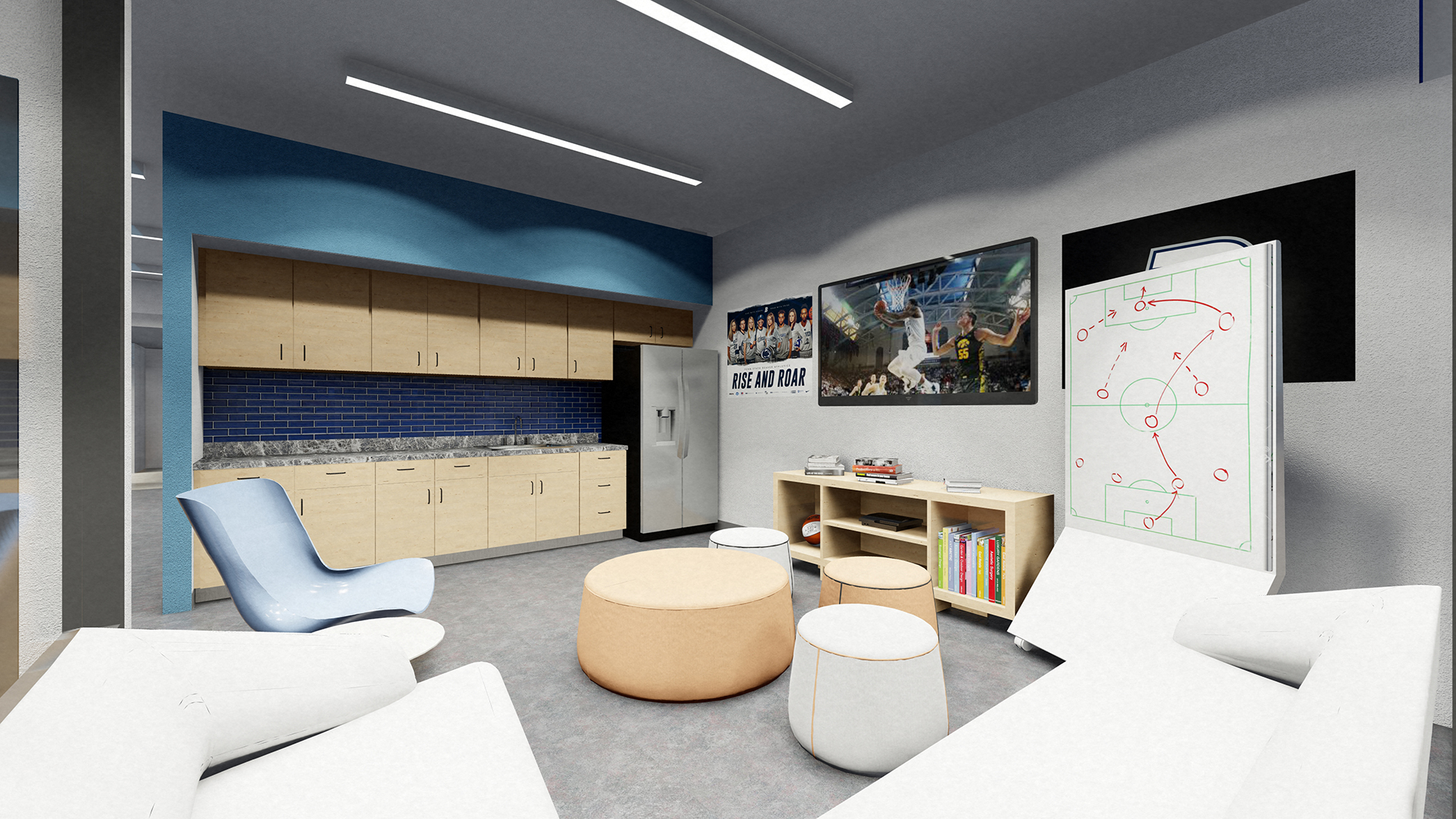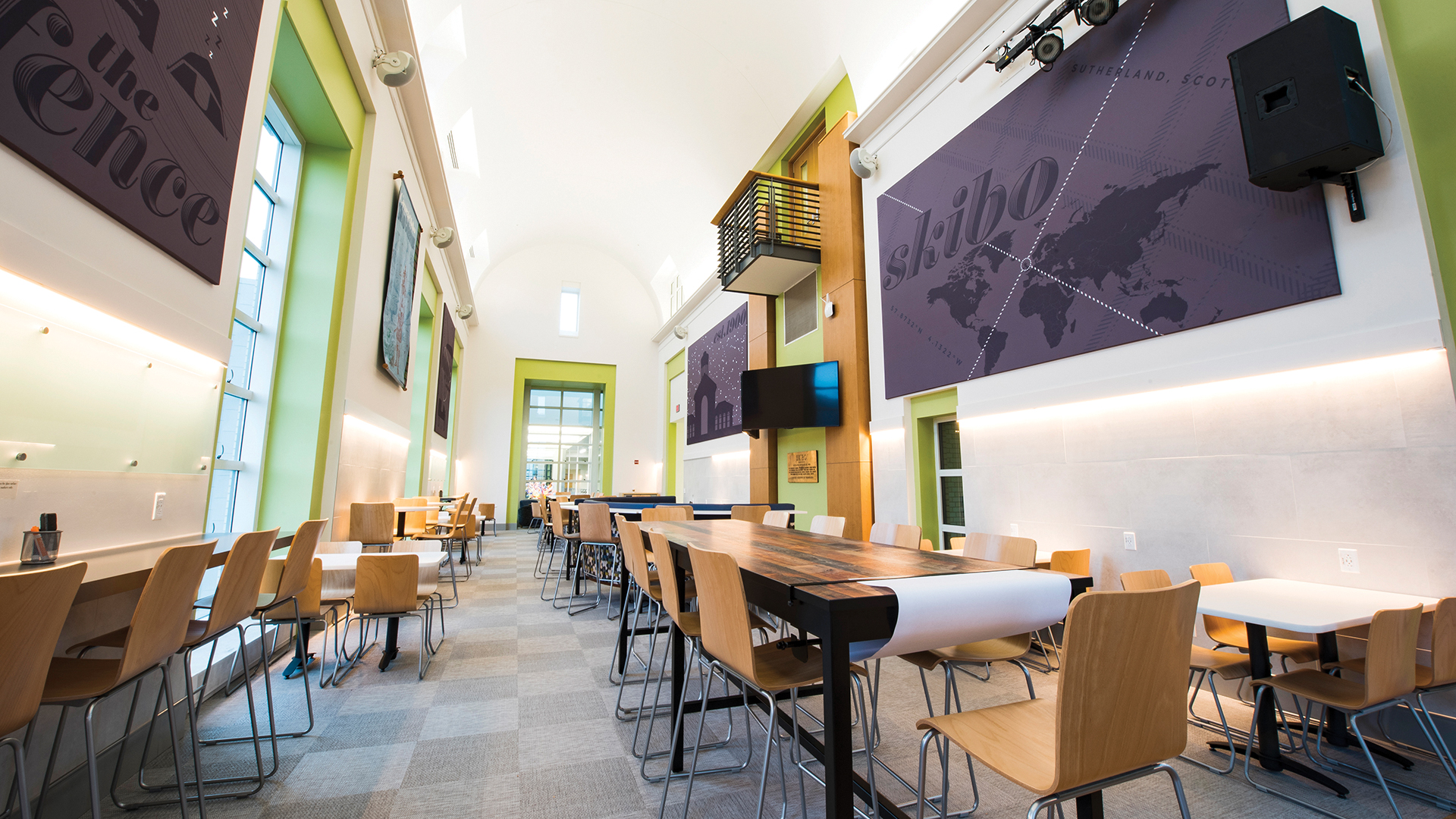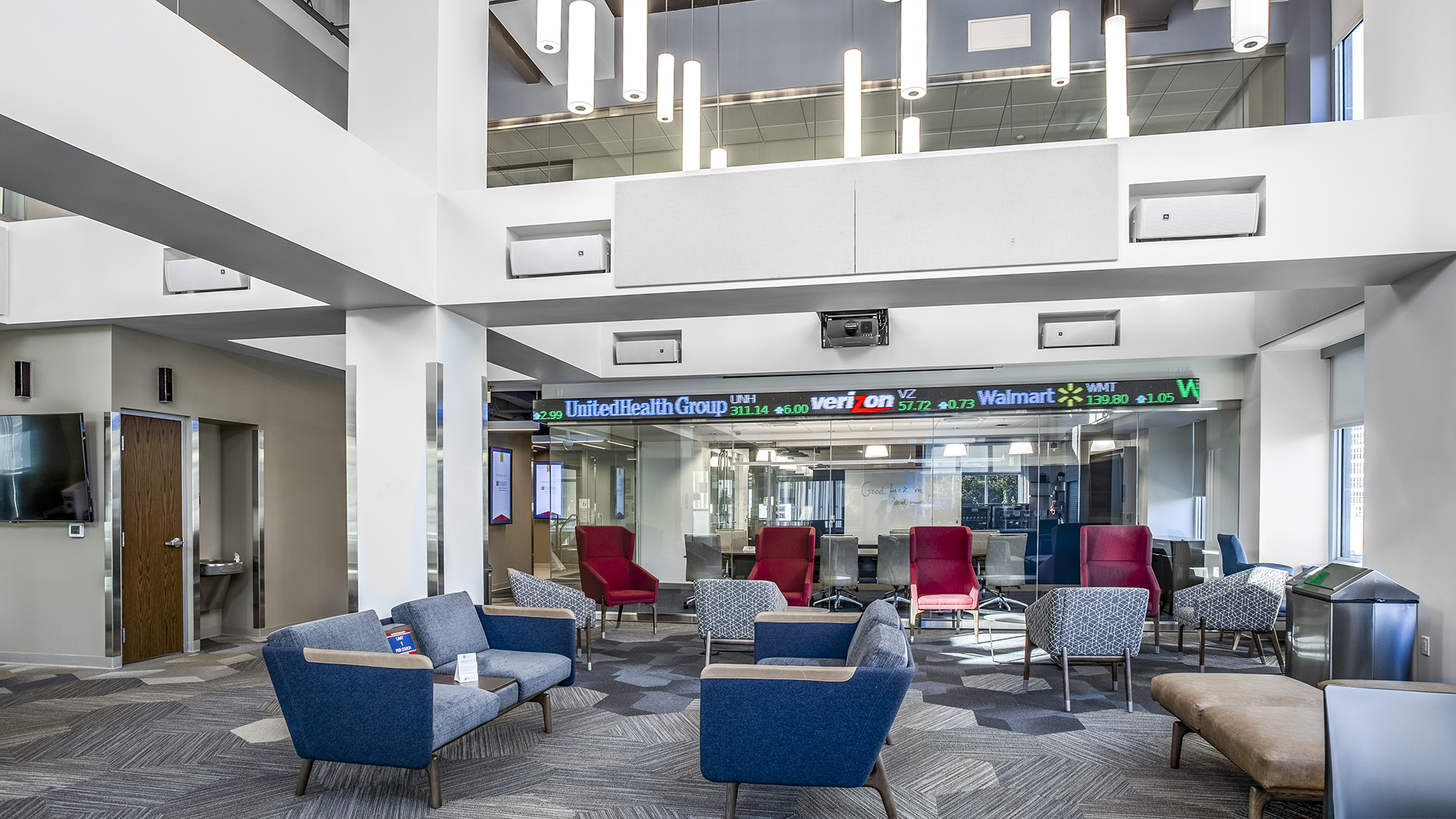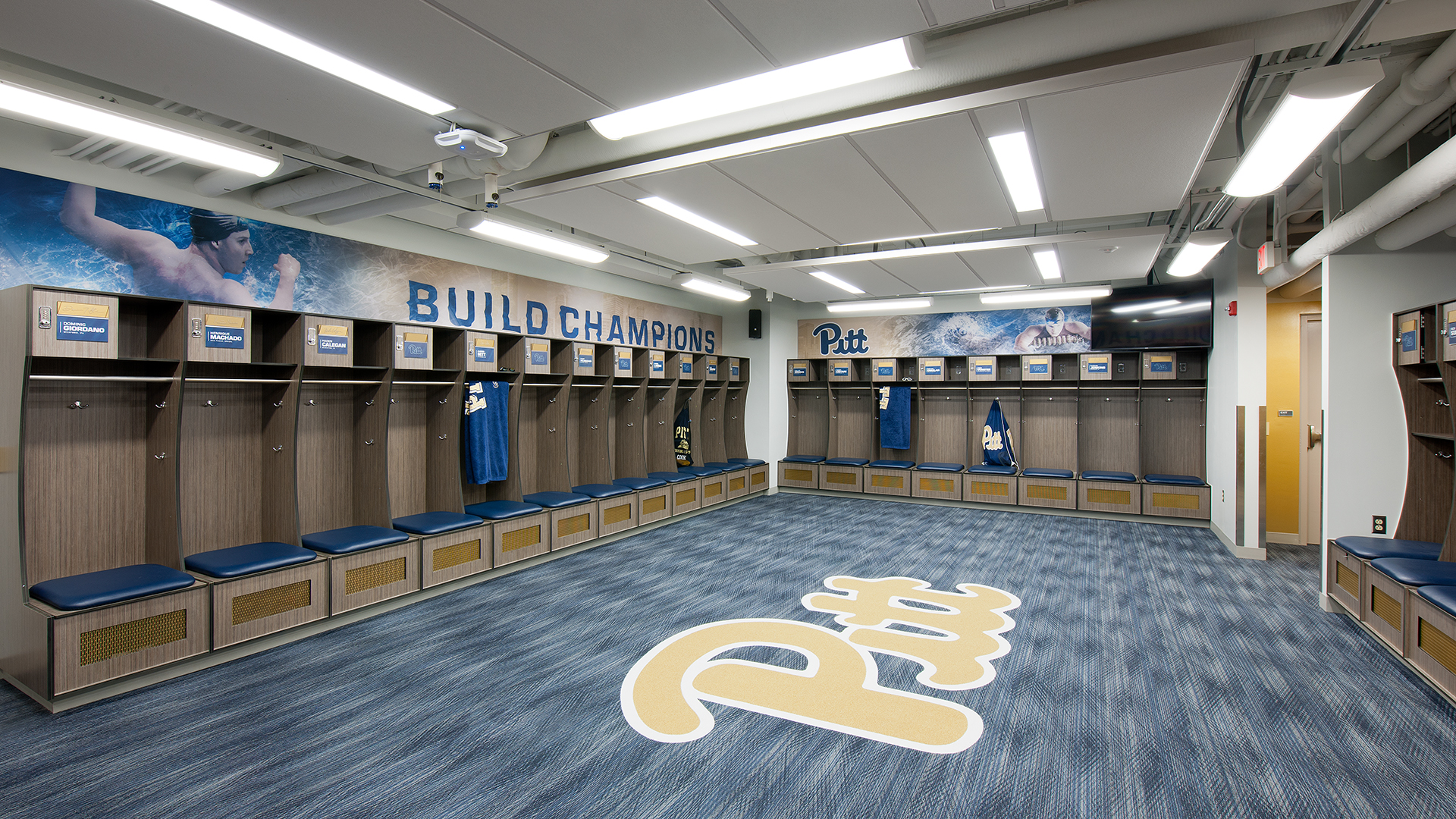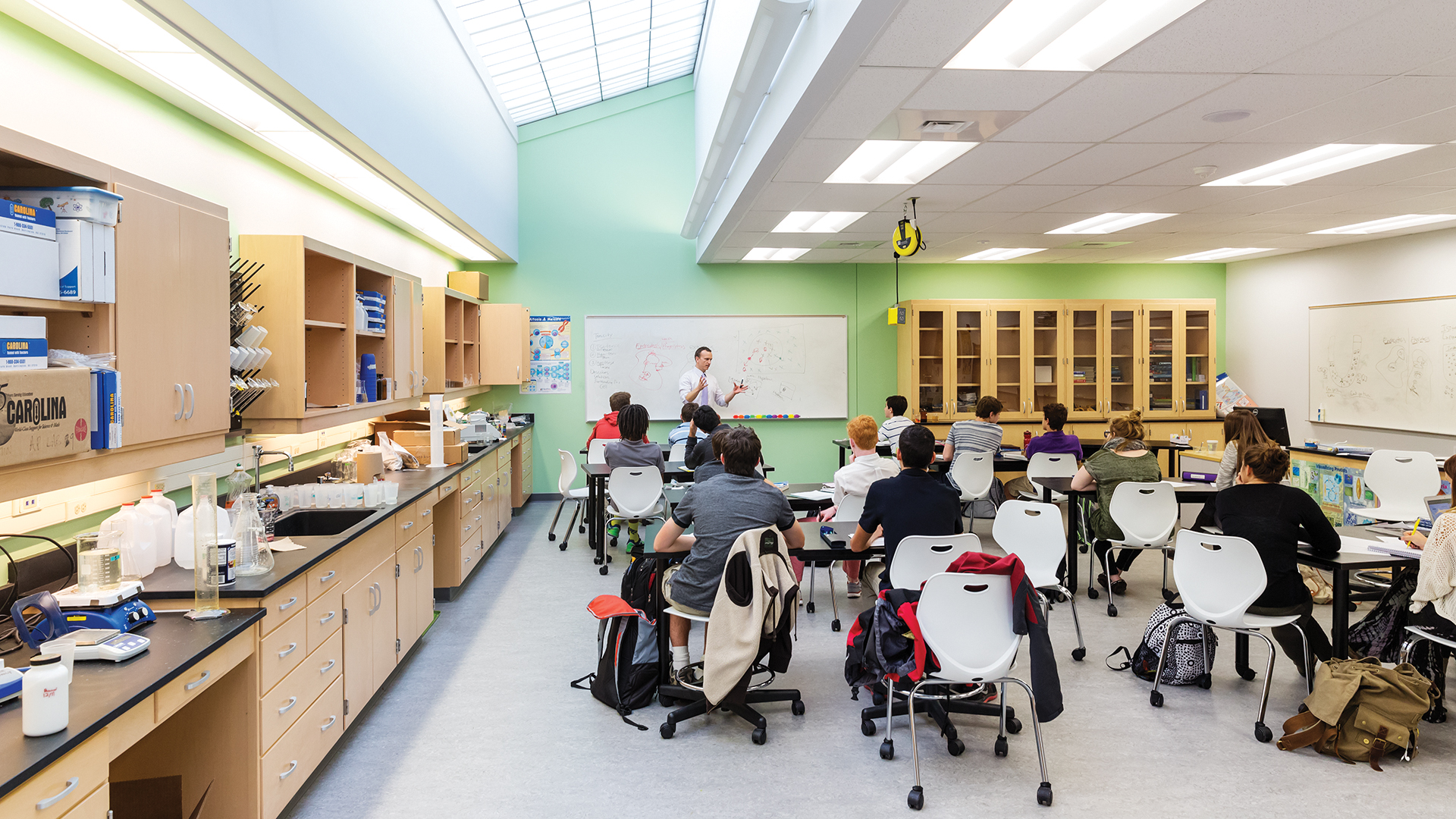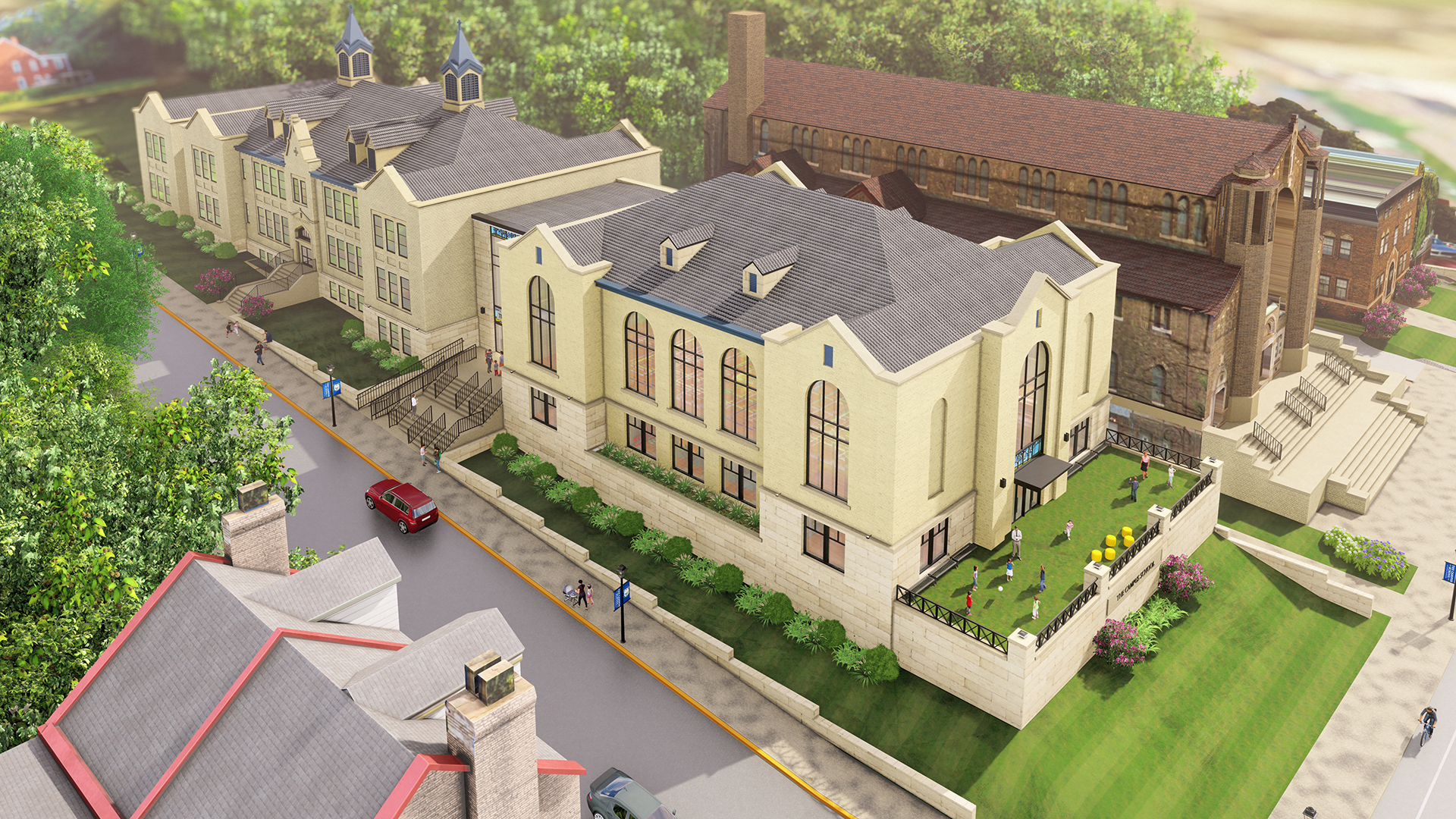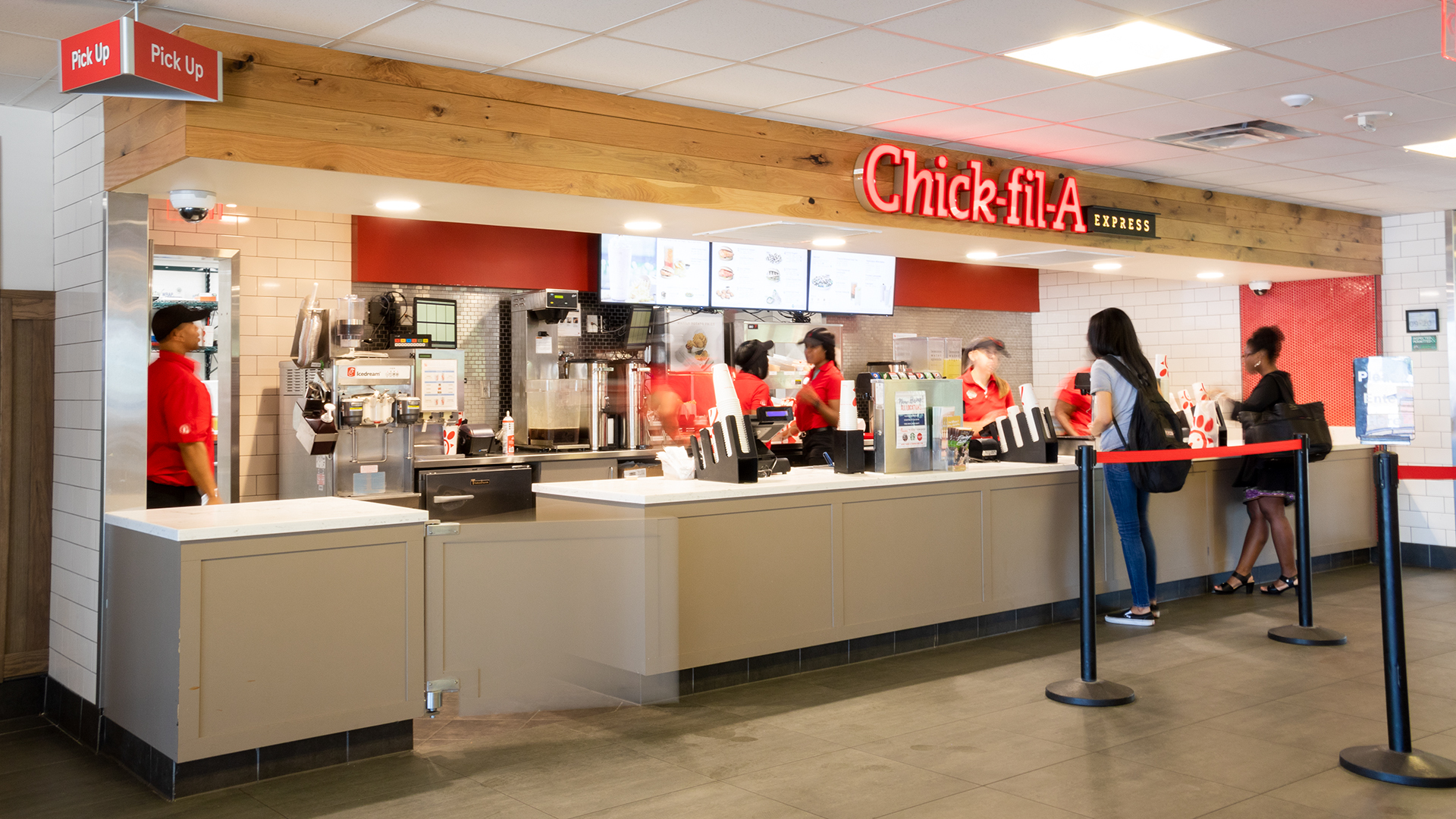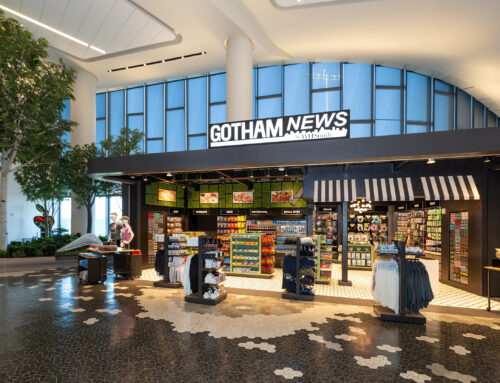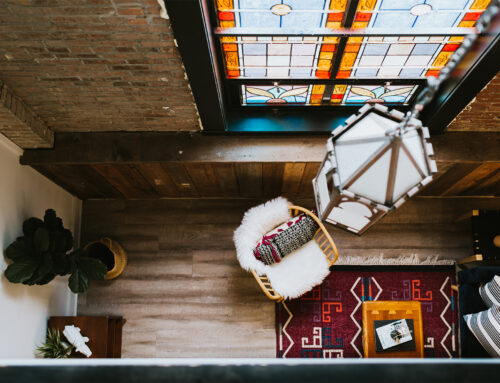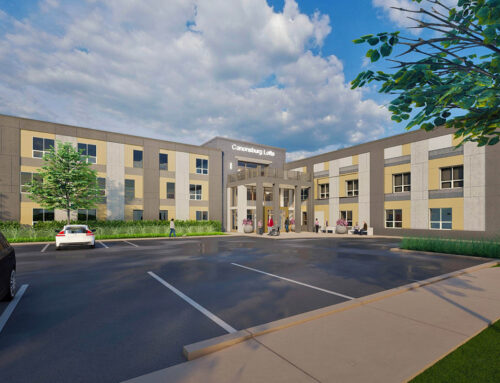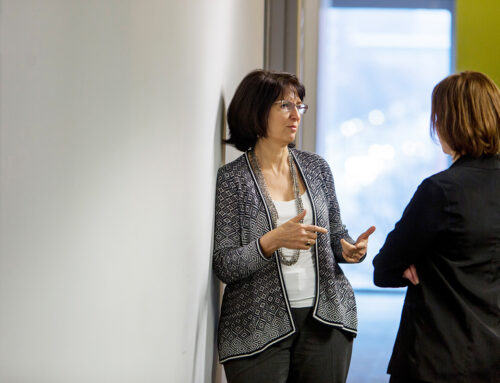Team Interview
What are some challenges unique to designing for education spaces?
With educational facilities, the end-users are dynamic and change on a yearly or even semesterly rotation. A significant challenge is creating a space that is timeless enough to satisfy the needs of many generations of end-users, each with a new and refreshed outlook. The other challenge lies in future-proofing our designs. As technology develops, educational spaces need to keep up to be successful long term.
What is your favorite piece of an education project you’ve worked on?
I loved creating and implementing our plan to carve a double-story grand atrium lobby out of the existing building for Duquesne University’s Rockwell Hall.

What are some trending ideas in education design right now?
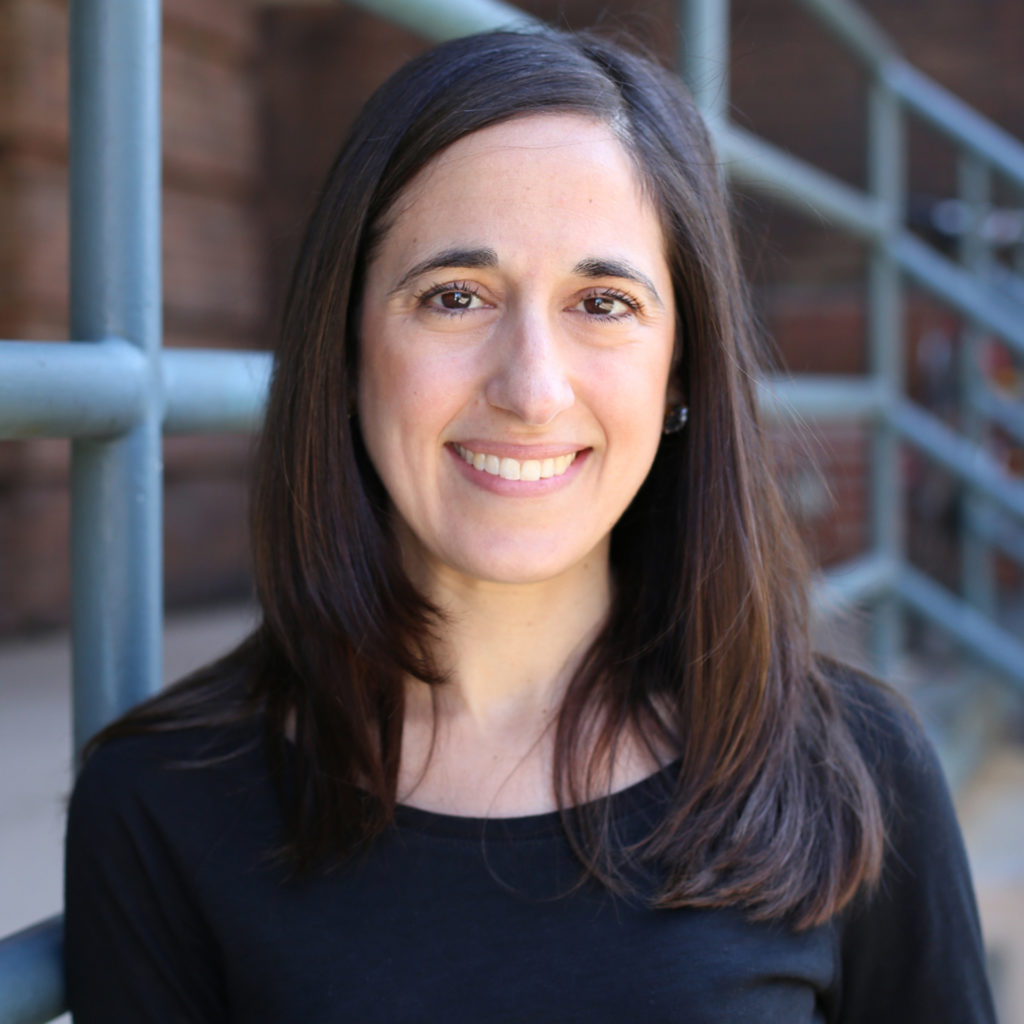
The idea of ‘Student Success’ is really big right now. Campuses are focusing on developing more facilities that offer programming related to career readiness, networking, and real-world experience.
Does education design have any crossover with other areas of design?
For the better of the last decade, there has been a significant disruption in corporate office design, primarily lead by changes in the way we now work. Corporate design now focuses on flexibility, collaboration, openness, and more equitable distribution of space and light. A lot of these trends are mirrored in our education designs, where we are using demountable partitions for faculty offices, reducing private space in favor of huddle rooms, and eliminating single-use areas. We are blurring the lines between faculty and student spaces and welcoming the community at large.

What kind of impact does good education design have on the surrounding community?
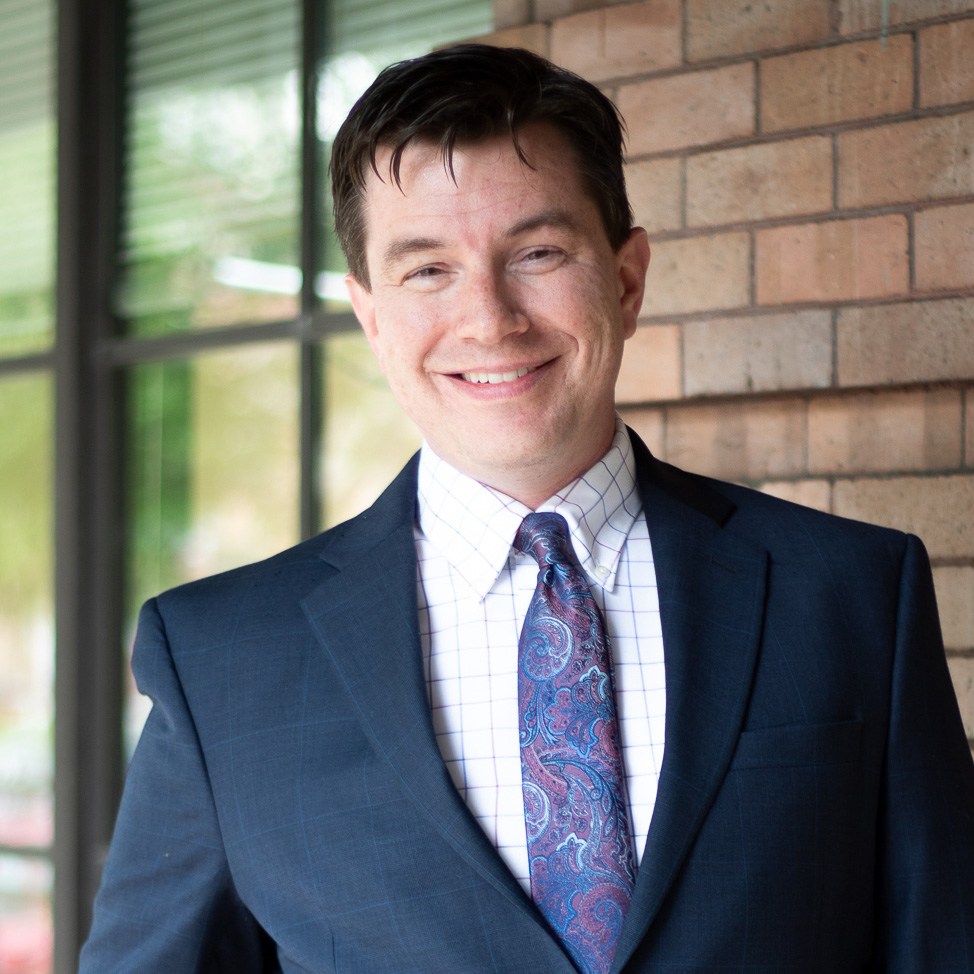
In most areas, the college campus is a major component of the community and drives much of the economics of the region. This is especially true in rural areas that depend on the student body to survive, but also in major metropolitan areas, where the institution defines much of the landscape and urban corridor.
What does good education design mean for Pittsburgh?
Having great educational facilities is a huge asset to any community and evokes a major sense of pride for a city. Pittsburgh is generally known for its highly ranked K-12 and Higher Education campuses, but continuing to grow and update is a necessity for any school to stay relevant. When strong educational facilities are an inherent part of a city’s fabric, like they are for ours, families feel proud and comfortable with where their children get their education. Local students can choose from a long list of incredible options close to home to fulfill their educational and professional goals.
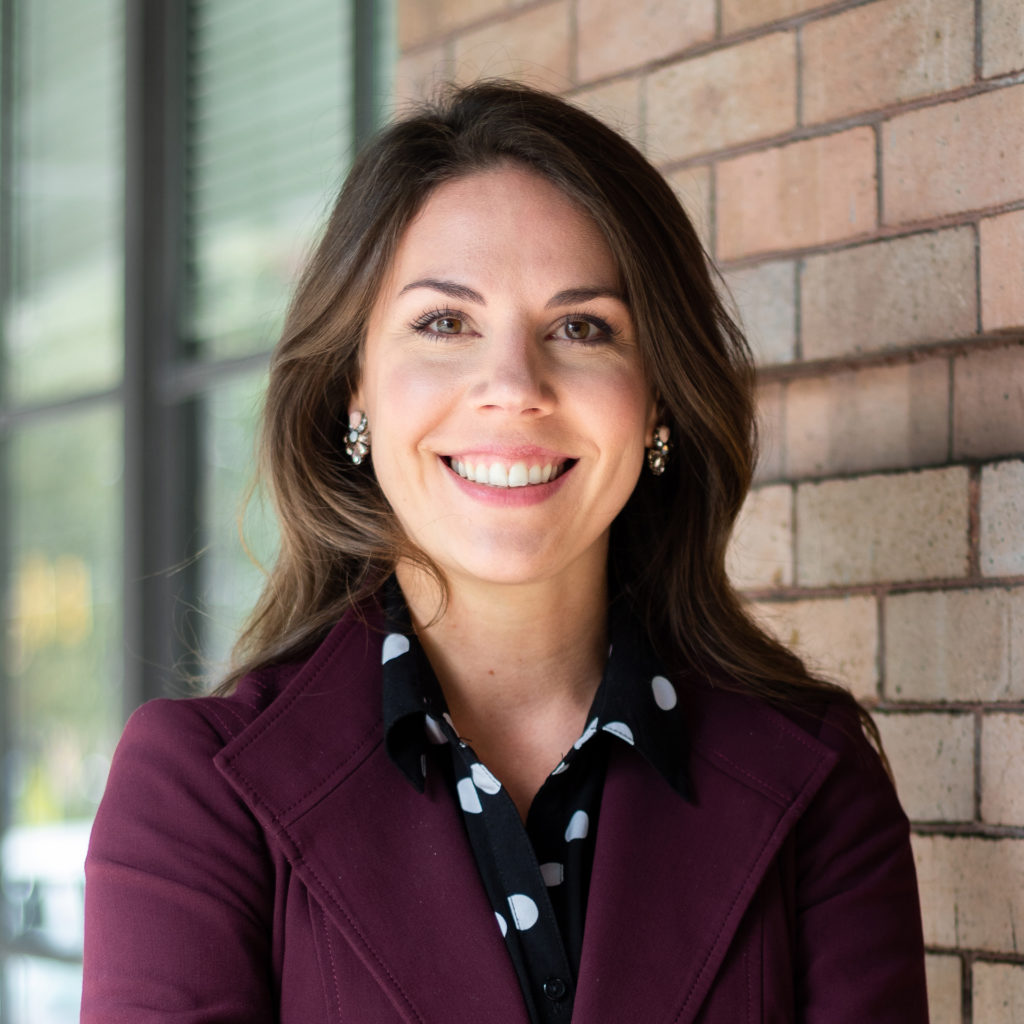
What values are most critical to consider when designing for education?
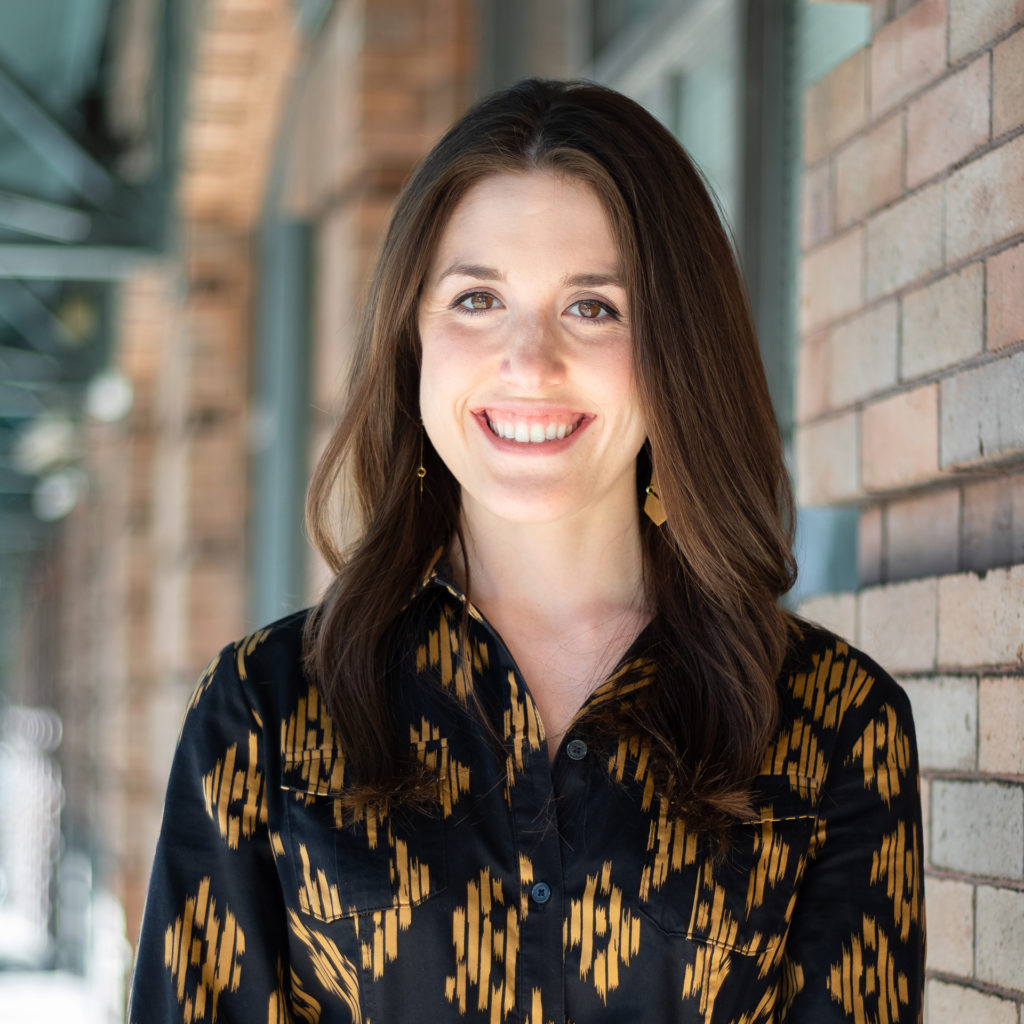
When designing educational spaces, the core focus areas are flexibility, visual appeal (to attract incoming students), functionality, durability, cost-effectiveness, navigating time constraints, and successfully integrating technology.
What does the timeline of an average education project look like?
The timeline of education projects is very quick, as they are often tied to the academic calendar. There is a need to minimize downtime and, if achievable, limit construction time to a semester, or a single academic year. There is no room for construction delays as areas are often programmed for their new use ahead of time and must be ready once the new school year begins.
What variety of spaces does education design include?

Education design spans a broad range of spaces. Beyond traditional classrooms, we also design assembly spaces, athletic facilities, offices, labs, retail storefronts, VR and multimedia hubs, student housing, lounges, storage facilities, food + beverage facilities (from vending machines up to commercial kitchens), libraries, chapels, early childhood spaces, and more. I could go on!
What is something that surprised you about designing for education?
How many decisions are dictated by the everyday user – the guy who has to change the light bulb or repair the damaged ceiling tile. Campuses have facilities standards for a reason, and so many designers choose to ignore them to suit a design concept. The bottom line is that the space has to be able to function as well as be appropriately maintained to be genuinely successful.

Where do you look for inspiration when designing education spaces?

It depends on the unique needs and influences behind each project, but I usually look at inspiration from other institutions of learning. Seeing what is and isn’t successful from other schools can help me form a good baseline direction for a project. I also pull a lot of inspiration from office design!

